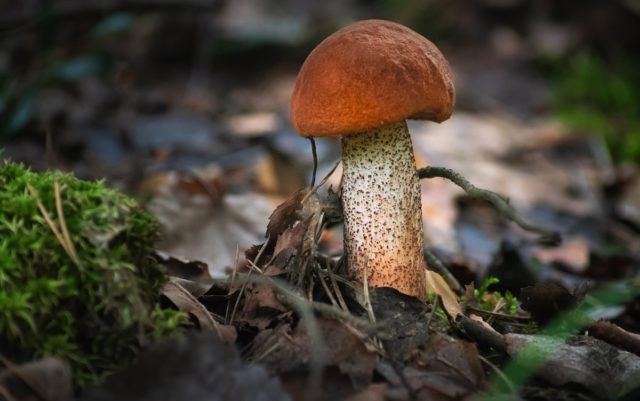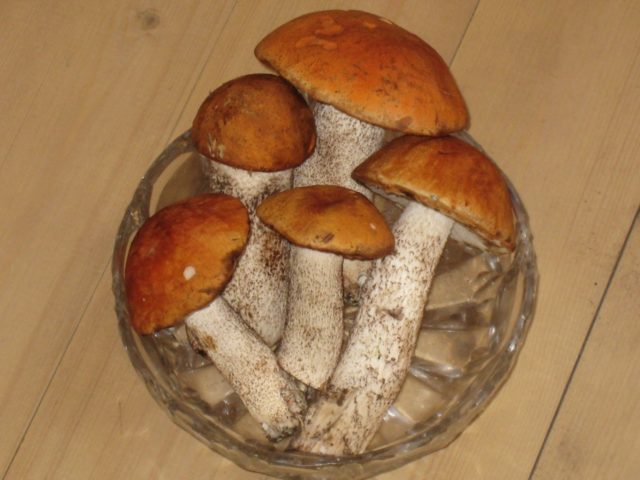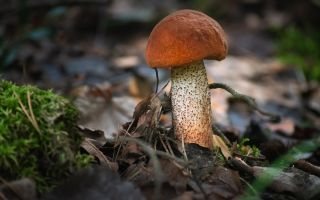Content
The benefits and harms of aspen mushrooms are based on their rich composition. They are considered one of the most common types of mushrooms in cooking. Aspen mushrooms have a lot of useful properties, which allows them to be used for medicinal purposes.
Composition and calorie content of boletus
Boletus is an edible mushroom belonging to the genus Leccinum. It got its name due to its ability to form a symbiotic relationship with aspen roots. The people also call the mushroom aspen and redhead. In cooking, it has become popular not only for its taste, but also for its low calorie content. 100 g of the product contains 22 kcal. The boletus contains the following components:
- vitamin C;
- niacin;
- amino acids;
- iron;
- fluorine;
- disaccharides;
- potassium;
- unsaturated fatty acids;
- phosphorus;
- tannins;
- retinol;
- calcium.
The content of vitamin PP is of great importance. He takes part in metabolic processes and has a positive effect on the functioning of the nervous system. Potassium is involved in oxygen metabolism and regulation of energy reserves. Unsaturated fatty acids improve heart function and cleanse blood vessels from excess cholesterol.
Why boletus mushrooms are useful
In terms of nutritional value, aspen mushrooms are not much inferior to various types of meat. Due to their low glycemic index, they can be consumed even with diabetes. Mushrooms not only help to diversify the diet, but also replenish the supply of nutrients in the body. They have powerful immunostimulating and antioxidant properties.

The most pronounced useful properties of aspen mushrooms include the following:
- lowering cholesterol levels;
- restoration of intestinal microflora;
- antitumor action;
- elimination of toxins, heavy metals and radionuclides from the body;
- prevention of atherosclerosis;
- restorative effect;
- elimination of flatulence;
- increased hemoglobin levels;
- stabilization of the cardiovascular system;
- improved vision.
The main benefit of boletus mushrooms for humans is to replenish the supply of minerals. In addition, they can be used in the fight against infectious diseases and immunodeficiency. Valuable amino acids in the aspen boletus provide activation of metabolic processes and protect the body from the harmful effects of the environment. Due to their pronounced absorption properties, they successfully fight the negative effects of radionuclides and toxic metals.
Boletus in folk medicine
The beneficial properties of aspen mushrooms have made them popular among supporters of alternative therapy. The tannins in the composition make them effective against inflammatory processes. A large supply of iron helps prevent anemia. Ascorbic acid has a thinning effect on the blood and cleanses the vascular cavity.
In addition, mushrooms have pronounced regenerative properties.They accelerate the recovery of the body after undergoing various diseases and injuries. As natural adaptogens, aspen mushrooms activate the defenses and prevent infection from entering the body. In most cases, they are used to fix the following problems:
- acne;
- diseases of the gastrointestinal tract;
- anemia;
- chronic fatigue syndrome;
- nervous disorders;
- atherosclerosis;
- anemia;
- infectious diseases.
In folk medicine, mushrooms are used to make decoctions and tinctures. They are initially dried and then crushed to a powdery consistency. Various medicinal products are made on the basis of this raw material. To increase the effectiveness of the treatment, aspen mushrooms are combined with herbs and other mushrooms that have a healing effect. The duration of treatment is determined individually.
The use of boletus in cooking
Due to their taste and high nutritional value, boletus can be an excellent alternative to meat. They are used to prepare both soup and main courses. Mushrooms go well with vegetables, sour cream, cheese, cream and herbs.
The boletus makes an excellent broth, which can be the basis for a soup. They can also be fried, stewed and boiled. But the most common dish is pickled boletus. As such, they perfectly complement potato dishes. During the cooking process, the mushrooms lose their shape and darken a little. To prevent this from happening, they should be soaked in a citric acid solution with a concentration of 0.5%.

During cooking, it is advisable to grind the mushrooms as small as possible in order to improve digestion by the digestive system. For canning, it is better to use young specimens that are not damaged.
Boletus harm and contraindications
If used improperly, mushrooms can provoke indigestion. The main disadvantages of aspen mushrooms include long-term assimilation by the body. They are considered quite heavy food. Therefore, they should not be abused, the portion size should be controlled. It is also necessary to stop eating old or damaged mushrooms. This will avoid symptoms of poisoning. Contraindications include:
- age under 7;
- gout;
- individual intolerance;
- exacerbation of chronic diseases of the liver, kidneys and stomach.
In childhood, the boletus is harmful with possible digestive problems. In the body of small children, there are not enough enzymes that can ensure the full digestion of boletus. During pregnancy and lactation, the possibility of adding them to the diet is discussed with the doctor individually. It is not recommended to eat mushrooms earlier than 3 months after labor.
How to choose and store
Aspen mushrooms are harvested from July to October. But the most fertile month is September. In appearance, the redhead is similar to boletus. Therefore, it is important to distinguish one from the other. The main feature of boletus is a dark brown cap. In boletuses, it is bright red or orange.
When picking mushrooms, you need to take a wicker basket and a sharp knife with you. Small forests, holes and spruce forests will be the best places to search. Mushrooms should be processed immediately after harvest. Otherwise, they will quickly become unusable. They are initially soaked in clean water. This takes no more than half an hour. Then the boletus is cleaned of dirt and debris.
Some of the mushrooms can be cooked immediately, and the rest can be frozen or dried. Before freezing, the redheads are cut into pieces.After thorough washing, it is important to rid them of excess moisture. After that, the aspen mushrooms are laid out on a board and put into the freezer. After 3-4 hours they can be taken out. Then they are packaged in sealed bags and put into the freezer. The shelf life of such a blank is 4-6 months.
Dried boletus retain their beneficial properties throughout the year. Drying is carried out using a special device or by hanging the product on a string. Previously, the fruit bodies are washed and cut into large slices. When using a dryer, the process will progress much faster. Drying on a string is carried out subject to good ventilation in a darkened room. For storage of dried mushrooms, a ceramic or glass container is selected. It is very important that it has a sealed cover.
Conclusion
The benefits and harms of boletus have been studied for hundreds of years. Mushrooms are broad-spectrum and contain a huge amount of nutrients. Despite this, great care must be taken when eating them.

